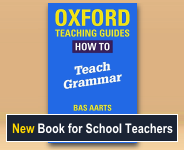Topic: Subordinate clause
A clause which is subordinate to some other part of the same sentence is a subordinate clause.
Englicious contains many resources for English language in schools, but the vast majority of them require you to register and log in first. For more information, see What is Englicious?

